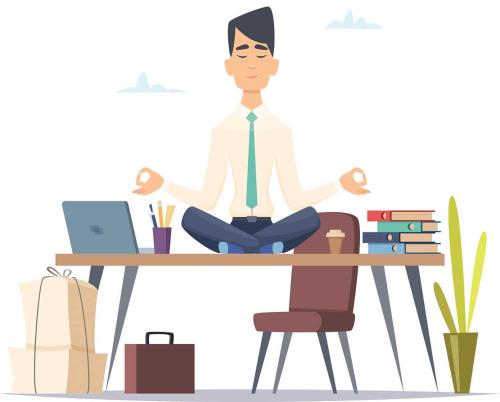Can you believe that in January you were relaxing on the beach, yet after returning from holidays you were quickly pressed for time with a truckload of work and energy-sappers coming at you from every direction? What has happened to your life? Is this how things will be until you fall over the line in a heap next December, only to start the whole cycle again next February?
We are generally reflective at the start of the year, and it can be hard to settle back into the work groove. Many of us are looking for different ways of working that give us greater control over our time. A new take on work–life balance, work–life integration, is a mindset that enables you to think differently about how you combine your work and personal life.
Contemporary thought about work–life balance suggests a sense of competition is created between work and life that in reality is often very difficult to achieve. Work–life balance captures the idea that work and personal lives are separate and that it’s important to try to achieve equal time for each.
It’s often associated with a juggling act that can be stressful and ultimately not very gratifying. When life incorporates home, family, community and personal health and wellbeing, endeavours to balance these with work can force unhealthy trade-offs.
By contrast, work–life integration is the idea that work and life are better when they intermingle. It’s about seeing all your activities as a part of a whole rather than compartmentalising them. Rather than finding that elusive balance, or making trade-offs, work–life integration is about finding synergies.
This implies there are no boundaries in how you organise your work but, in reality, work–life integration cannot happen without your employer being onboard, especially in relation to flexibility. In part, work–life integration is driven by the blurring of personal and professional life as a result of technological advances that enable us to work from anywhere. This is often the case for chemists, although for those working in the lab it may require you to get more creative.
It’s important to allow regular time for relaxation, exercise and appointments, and for organisations to encourage you to dovetail these with your work obligations. An option would be to get personal things out of the way early in the day and work later (or vice versa), or even intersperse them throughout the day. Everyone will have different needs according to their version of what is ideal for them. Too often, work commitments or “presenteeism” take precedence over your personal life.
You might also benefit from being better organised when planning your annual leave, especially regular short breaks to regenerate. There is a positive psychological effect from just knowing you have some leave booked in the calendar.
Some people feel as though their workload doesn’t allow them enough time to take annual leave. Depending on which survey you read, up to 60% of Australian workers did not take all their annual leave days last year, while at the same time research indicates that most people do not think four weeks of paid annual leave is enough. We all know that not taking leave is ultimately damaging for wellbeing and productivity, so don’t fall into that trap.
When everyone is overworked and not taking leave – including leaders in an organisation – and there is little opportunity to take advantage of flexible work options even if they exist, this is indicative of a poor culture. This can be a problem in competitive scientific environments with project deadlines, high workloads, constant grant applications and understaffing, and can often lead to stress, burnout and poor morale.
The main contributor to employee wellbeing, whether you are working in the office, the lab or remotely, is how well an organisation integrates wellbeing into work at the individual, team and organisational level. Hyper-competitive work environments where stress is built into the work can lead to a deviation from wellbeing even if people are getting sleep, exercise and eating well. Well-designed jobs and workplaces have always been, and will continue to be, key contributors to physical, mental and emotional wellbeing.
Compassion-centred workplaces respond effectively to burnout when it happens by focusing not only on the individual but on the work environment and operating systems. If this doesn’t sound like your workplace, then looking for a new job is probably a good idea.



